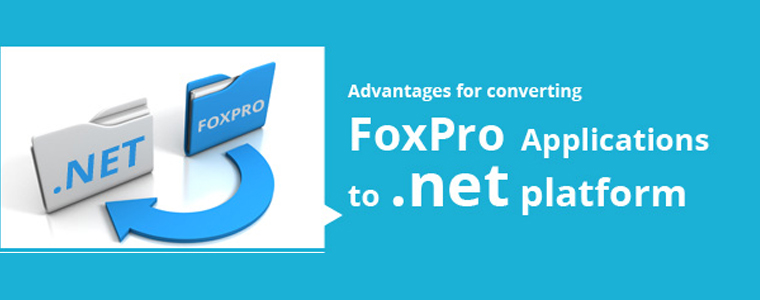
By Ghulam Nabi Shah | Published on February 19th, 2021 | Last updated on October 14th, 2021 |
In our modern era of technology, the only thing that does not change is changing itself! With today’s application development procedures and techniques continually in fluctuating, there are dynamic changes happening at a faster pace in recent years. The trials of handling large databases and the repeated changes in operating system architecture make FoxPro applications very tough and time-consuming to handle. FoxPro applications are also not furnished with several data entry points. Thus, businesses are going for the dependable .NET option.
Modern applications shadow a distinctly altered design pattern compared to an application developed a few years ago. At one time, the performance of the applications developed was given priority. Now, the main business concerns are security and scalability. The forceful .NET platform gives you the skill to correct faults in the remaining application as well as improve the application with fresher functionalities. Handling these anxieties can be hard for even the best developers. Currently, the software industry concentrates mainly on HTML application development compared to the previous Windows-based applications to offer fitting availability and reach.
The beginning of web services has now shifted to offering Windows applications associated with connectivity like that of a browser, which provides added advantage of the power of user interface in Windows combined with offline properties. Not too much, there is a greater than ever demand for cell phone amalgamation, such as Pocket PCs and Smart Phones. Inherent problems occur when functions in Visual FoxPro are leveraged in a COM/HTML society. If you do get past the snag, you are left with a tactic that has a set of complications on its own. COM is not the problem, but it becomes difficult in large systems because of essential design hitches such as a distribution of components spanning all those applications functioning on a system. Even if you try to install and/or make the users known about the resolutions for Visual FoxPro and COM, you will still run into DLL hell. Remember, COM does not work well in a scattered system.
I do believe that converting to .NET is the smartest way to go and there are many user benefits in doing this. Here are my top four:
1. .NET offers the drop & drag feature.
2. .NET language effortlessly sustain HTML.
3. .NET makes available the static page use of security.
4. .NET provides many tools.
Here are some of the advantages of the .Net platform from a business applications point of view.
As the .Net framework uses object-oriented programming, this eliminates any unnecessary codes which save time and money. The .Net framework also consists of reusable codes and reusable components. In the long run, this advantage translates to less time and money to develop and update any application.
The .Net framework has been used to develop thousands of applications over the years. The framework is known for its stability and reliability. The performance of .Net applications on Microsoft® Windows Server™ 2003 and Windows 2000 Server has been equally stable and reliable.
A .Net-powered application consists of controlled code sharing, side-by-side versioning, private components, partially trusted code, and no-impact applications. The presence of these individual components makes for easy deployment. The existing code execution environment facilitates said code execution with reduced conflicts in deployment.
A .Net application can be executed on multiple platforms such as a browser, desktop, smartphone browser, and more. .Net is also compatible with multiple languages such as
IronPython, IronRuby, managed C++, VB.NET, and C#. .Net has been seen and promoted as a language-independent framework due to linguistic flexibility.
.NET considerably reduces the amount of code needed to create large and complex applications which can intensify overall development quickness and while also reducing costs. It even allows you to form an assortment of web-based solutions, websites, and applications. If you are thinking about or even planning to convert, I would suggest you contact us for a consultation.